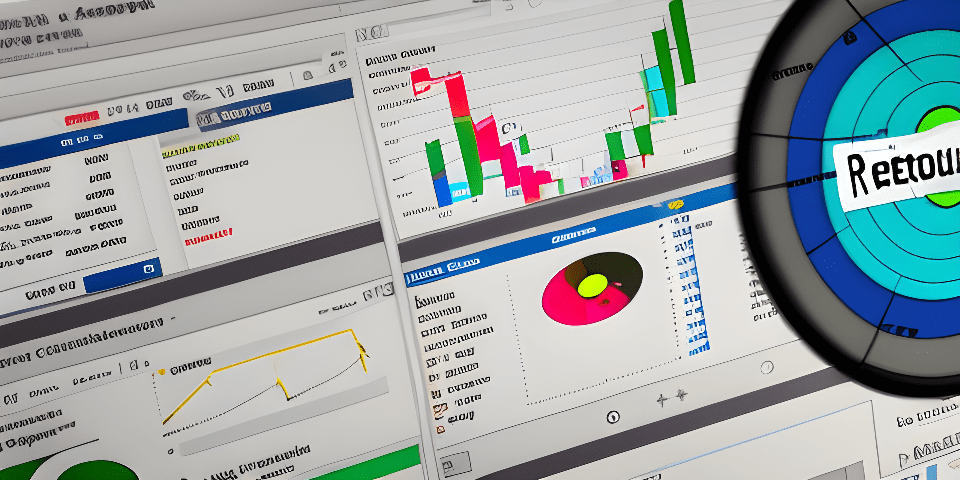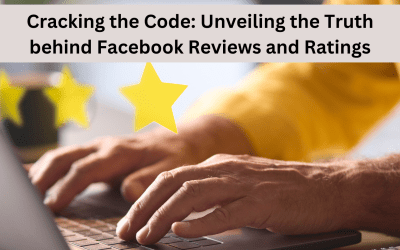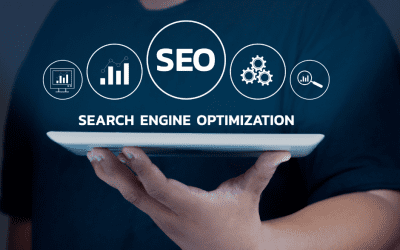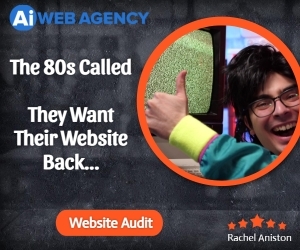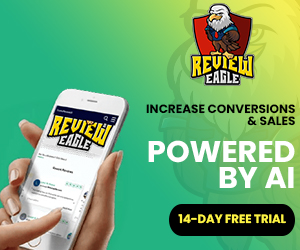Have you ever wondered if paid traffic is worth the investment? Are you skeptical about the effectiveness of driving traffic to your website through paid channels? In this blog post, we are going to debunk the myths and expose the truth about paid traffic. Brace yourself for some eye-opening insights that will change the way you think about this marketing strategy. Businesses of all sizes are heavily relying on digital marketing to attract and engage their target audience. One of the most commonly discussed methods in the world of online advertising is paid traffic. However, there are numerous misconceptions surrounding this approach that can cause hesitation and confusion for marketers. So, let’s get straight to the point and dive deep into the truths behind these paid traffic myths. We will embark on a journey to separate fact from fiction and shed light on the real potential of paid traffic. By the end of this article, you will have a clear understanding of whether paid traffic is a worthy investment for your business or just another overrated hype. But before we unveil the truth, let’s explore what these myths are and why they have gained such a stronghold in the marketing world. Prepare yourself to be amazed as we unravel the secrets behind the misconceptions surrounding paid traffic strategies.
3 MYTHS THAT UNLOCK THE SECRET TO PAID TRAFFIC SUCCESS – Once you understand these myths and the secrets behind them, and how to overcome them, it can literally help your business go from struggling to being incredibly successful faster than you ever thought possible
Is Paid Traffic Worth the Investment?
Is Paid Traffic Worth the Investment?
When it comes to online advertising, one of the most debated topics is whether paid traffic is worth the investment. Many marketers and business owners have different opinions on this matter. However, by debunking some common myths surrounding paid traffic, we can get a clearer picture of its true value.
Myth 1: Paid traffic is expensive and yields no results.
Contrary to popular belief, paid traffic doesn’t have to break the bank. With careful planning and targeting, you can set a budget that suits your needs. Additionally, paid traffic can deliver tangible results in terms of increased website traffic, conversions, and brand visibility.
Myth 2: Organic traffic is superior to paid traffic.
While organic traffic has its advantages, such as long-term sustainability and credibility, paid traffic can provide immediate results. It allows you to reach a wider audience, target specific demographics, and test different marketing strategies.
Myth 3: Paid traffic is only for big businesses.
Paid traffic is not exclusive to big corporations. Small and medium-sized businesses can also benefit from it. With proper planning and optimization, even businesses with limited resources can achieve significant returns on their investment.
Myth 4: Paid traffic is unreliable and lacks quality.
Paid traffic platforms have evolved over the years, ensuring better targeting and quality leads. By leveraging audience segmentation and retargeting strategies, you can reach the right people at the right time, increasing the likelihood of conversions.
Debunking the Myths: Exposing the Truth About Paid Traffic
Paid traffic is a popular strategy used by many businesses to increase visibility and drive traffic to their websites. However, there are several myths surrounding paid traffic that need to be debunked. Let’s expose the truth about paid traffic and separate fact from fiction.
One common myth is that paid traffic is expensive and not worth the investment. While it is true that paid traffic can be costly, it is important to consider the return on investment. With targeted ads and proper optimization, paid traffic can yield significant results, leading to improved conversions and sales.
Another myth is that paid traffic is ineffective compared to organic traffic. While organic traffic is undoubtedly valuable, paid traffic can provide quick results and help businesses reach their target audience more effectively. It can complement organic efforts and provide an extra boost to overall website traffic.
Some people believe that paid traffic is only suitable for large businesses with big budgets. However, paid traffic strategies can be tailored to suit businesses of all sizes and budgets. With careful planning and targeting, even small businesses can benefit from paid traffic and see a positive impact on their bottom line.
Lastly, there is a misconception that paid traffic is not sustainable in the long term. While it is true that paid traffic requires ongoing investment, it can be a sustainable strategy when properly managed. By continuously monitoring and optimizing campaigns, businesses can maximize their return on investment and ensure long-term success.
In conclusion, paid traffic myths can often discourage businesses from utilizing this effective marketing strategy. However, by understanding the truth about paid traffic and debunking these myths, businesses can make informed decisions and leverage paid traffic to drive growth and achieve their marketing goals.
The Growing Importance of Digital Marketing
Digital marketing has become an essential aspect of any business strategy. In today’s digital age, companies are realizing the growing importance of implementing effective digital marketing techniques to reach their target audience and drive business growth. One area of digital marketing that often sparks debate is paid traffic. Let’s debunk some of the myths surrounding paid traffic and expose the truth.
One common myth is that paid traffic is a waste of money. However, when executed properly, paid traffic can generate significant returns on investment. By targeting specific demographics and using analytics to optimize campaigns, businesses can drive qualified traffic to their websites and increase conversions.
Another myth suggests that paid traffic is a quick fix for low organic rankings. While paid traffic can provide an immediate boost in website visitors, it should not be solely relied upon to increase organic rankings. A comprehensive digital marketing strategy should include a combination of paid and organic tactics to achieve long-term success.
Some people believe that paid traffic is expensive and not worth the investment. While it’s true that paid campaigns require budget allocation, the cost can be outweighed by the potential revenue generated. With precise targeting options available, businesses can ensure their ad spend is focused on the right audience, leading to higher conversion rates and a positive return on investment.
In conclusion, digital marketing is a vital component of business success in today’s digital landscape. By understanding the truth about paid traffic and debunking the myths surrounding it, businesses can make informed decisions and leverage the power of digital marketing to achieve their goals.
Introduction to Paid Traffic
Paid traffic is a popular strategy used by businesses to drive traffic to their websites and increase conversions. However, there are several myths surrounding paid traffic that need to be debunked. In this article, we will expose the truth about paid traffic and separate fact from fiction.
One common myth about paid traffic is that it is too expensive and not worth the investment. While it is true that paid traffic can be costly, it can also yield significant returns if implemented correctly. By targeting the right audience and optimizing your campaigns, you can generate high-quality leads and increase your revenue.
Another myth is that paid traffic is ineffective compared to organic traffic. While organic traffic is important for long-term success, paid traffic can provide immediate results. With paid traffic, you have control over who sees your ads and when, allowing you to reach your target audience more efficiently.
Some people believe that paid traffic is a one-time solution and does not require ongoing management. This is far from the truth. To maximize the effectiveness of your paid traffic campaigns, you need to constantly monitor and optimize them. Regularly analyzing data, adjusting bids, and testing different strategies will help you improve your ROI.
In conclusion, paid traffic is a valuable tool for businesses, but it is important to separate fact from fiction. By debunking the myths surrounding paid traffic, you can make informed decisions and utilize this strategy effectively. So, don’t let the myths hold you back from exploring the potential of paid traffic for your business.
Common Misconceptions about Paid Traffic
Paid traffic is a widely-used marketing strategy that involves paying for advertisements to drive traffic to a website. However, there are several misconceptions surrounding this method. Let’s debunk some of the most common myths about paid traffic.
One common misconception is that paid traffic is ineffective. Some believe that organic traffic is superior and that paid traffic is just a waste of money. However, this is far from the truth. Paid traffic can be highly targeted and can generate immediate results, making it an effective strategy for businesses looking to boost their online visibility.
Another myth is that paid traffic is too expensive. While it’s true that paid campaigns can require a significant investment, the return on investment can be substantial. By carefully targeting the right audience and optimizing campaigns, businesses can achieve a high conversion rate and maximize their return on investment.
Some people also believe that paid traffic is not sustainable in the long run. They argue that once the budget is exhausted, the traffic will disappear. However, paid traffic can be a sustainable strategy when implemented correctly. By continuously optimizing campaigns, businesses can maintain a consistent flow of traffic and achieve long-term success.
Lastly, there is a misconception that paid traffic is only suitable for large businesses with big marketing budgets. In reality, businesses of all sizes can benefit from paid traffic. With various platforms and targeting options available, businesses can tailor their campaigns to suit their specific needs and budgets.
In conclusion, paid traffic is an effective and sustainable marketing strategy that can help businesses increase their online visibility and achieve their goals. By debunking these misconceptions, businesses can make informed decisions and leverage the power of paid traffic to drive success.
Myth # Paid Traffic Is Expensive and Ineffective
Many people believe that paid traffic is both expensive and ineffective. However, this is actually just a myth. In reality, paid traffic can be a highly cost-effective way to boost your website’s visibility and attract targeted visitors.
One of the biggest misconceptions about paid traffic is that it is prohibitively expensive. While it’s true that some advertising platforms can be pricey, there are plenty of affordable options available as well. For example, social media platforms like Facebook and Instagram offer advertising solutions that can fit within any budget.
Furthermore, paid traffic can actually be a very effective strategy for driving targeted traffic to your website. Unlike organic traffic, which can be unpredictable and reliant on search engine algorithms, paid traffic allows you to specifically target your ideal audience. This means that you can ensure that your ads are being seen by people who are genuinely interested in your products or services.
Of course, like any marketing strategy, paid traffic does require careful planning and execution. It’s important to research and choose the right platforms for your target audience, as well as to constantly monitor and optimize your campaigns for maximum effectiveness.
In conclusion, the myth that paid traffic is expensive and ineffective is simply not true. By utilizing affordable advertising options and targeting your ideal audience, paid traffic can be a highly effective tool for driving targeted visitors to your website. Don’t let the misconceptions hold you back from harnessing the power of paid traffic for your business.
Myth # Organic Traffic Is Always Better Than Paid Traffic
Many marketers believe that organic traffic is always superior to paid traffic. However, this is not necessarily true. While organic traffic has its benefits, paid traffic can also be a valuable strategy for driving visitors to your website.
One of the main advantages of organic traffic is that it is free. By optimizing your website for search engines and creating high-quality content, you can attract visitors without spending money on ads. Additionally, organic traffic tends to be more sustainable in the long run, as it can continue to generate visitors even after you stop actively working on your website.
On the other hand, paid traffic can offer immediate results. By investing in targeted ads, you can reach a specific audience and drive traffic to your website almost instantly. This can be particularly useful if you have a new website or product that you want to promote quickly.
Moreover, paid traffic can provide valuable insights and data. With the right tools, you can track metrics such as click-through rates, conversions, and customer behavior. This data can help you refine your marketing strategy and make informed decisions to optimize your campaigns.
In conclusion, while organic traffic is often seen as the holy grail of online marketing, it is important to recognize the value of paid traffic. Both strategies have their own strengths and can be effective in driving visitors to your website. The key is to find the right balance and leverage the advantages of each approach to achieve your marketing goals.
Myth # Paid Traffic Doesn’t Drive Quality Leads
Paid traffic has long been a topic of debate among marketers. Some believe that it doesn’t drive quality leads, dismissing it as a myth. However, this perception couldn’t be further from the truth. In fact, paid traffic can be a valuable tool for generating high-quality leads and driving conversions.
One of the main reasons why people doubt the effectiveness of paid traffic is the misconception that it only attracts low-quality or irrelevant visitors. While it’s true that poorly targeted campaigns can result in wasted ad spend, a well-executed paid traffic strategy can attract highly relevant and engaged audiences.
Paid traffic allows you to reach a specific target audience based on demographics, interests, and online behavior. By leveraging advanced targeting options, you can ensure that your ads are shown to the right people at the right time. This precision targeting increases the likelihood of driving quality leads who are genuinely interested in what you have to offer.
Furthermore, paid traffic provides immediate results. Unlike organic traffic, which can take time to build up, paid campaigns can generate traffic and leads almost instantly. This makes it an ideal strategy for businesses looking to quickly boost their online presence and generate leads.
Additionally, paid traffic offers valuable data and insights. Through analytics and tracking tools, you can gather important data about your audience’s behavior, preferences, and conversion patterns. This information can then be used to refine your marketing strategies and improve the quality of your leads over time.
In conclusion, the notion that paid traffic doesn’t drive quality leads is a myth that needs to be debunked. When executed correctly, paid traffic can be a powerful tool for attracting highly targeted audiences and generating valuable leads. By leveraging advanced targeting options, monitoring campaign performance, and continuously optimizing your strategy, you can ensure that your paid traffic efforts drive meaningful results for your business.
Myth # Paid Traffic Results in Low Conversion Rates
Paid traffic is often misunderstood, with many believing that it leads to low conversion rates. However, this is just a myth. In reality, paid traffic can actually result in high conversion rates when utilized effectively.
One of the main reasons why people assume that paid traffic leads to low conversion rates is because they fail to target the right audience. It is crucial to identify and target the audience that is most likely to be interested in your product or service. By doing so, you can increase the chances of converting them into customers.
Another misconception surrounding paid traffic is that it is expensive and not worth the investment. While it is true that running paid campaigns can be costly, it is important to consider the potential return on investment. With the right strategy and optimization, paid traffic can generate significant revenue and provide a positive return on investment.
Furthermore, paid traffic offers the advantage of immediate visibility. Unlike organic traffic, which takes time to build, paid traffic allows you to reach your target audience instantly. This can be particularly beneficial for businesses looking to promote new products or services or generate leads quickly.
In conclusion, the belief that paid traffic results in low conversion rates is a myth. By targeting the right audience, optimizing campaigns, and considering the potential return on investment, paid traffic can actually lead to high conversion rates and drive business growth.
Debunking the Myths: Separating Fact from Fiction
There are many myths surrounding paid traffic, but it’s important to separate fact from fiction. Let’s debunk these myths and expose the truth about paid traffic.
Myth 1: Paid traffic is a waste of money.
Fact: While it’s true that paid traffic requires an investment, it can be an effective way to drive targeted traffic to your website. With proper targeting and optimization, paid traffic can generate quality leads and increase conversions.
Myth 2: Paid traffic is only for large businesses with big budgets.
Fact: Paid traffic strategies can be tailored to fit any budget. With platforms like Google Ads and Facebook Ads, you can set your own budget and adjust it as needed. It’s all about finding the right balance between cost and results.
Myth 3: Paid traffic doesn’t deliver long-term results.
Fact: Paid traffic can provide immediate results, but it can also contribute to long-term success. By analyzing data and optimizing your campaigns, you can continuously improve your targeting and ad copy, leading to sustained traffic and conversions.
Myth 4: Paid traffic is irrelevant for organic search rankings.
Fact: While paid traffic doesn’t directly impact organic search rankings, it can indirectly benefit your SEO efforts. Increased website traffic and engagement from paid campaigns can signal to search engines that your website is valuable and deserving of higher rankings.
In conclusion, paid traffic is not a waste of money, it can be tailored to any budget, it can deliver long-term results, and it can indirectly benefit your organic search rankings. Debunking these myths helps us understand the truth about paid traffic and its potential value for businesses.
The Real Potential of Paid Traffic
Paid traffic has become a popular method for businesses to increase their online visibility and drive more targeted traffic to their websites. However, there are still many myths and misconceptions surrounding paid traffic that need to be debunked. In this blog post, we will expose the truth about paid traffic and explore its real potential.
One common myth about paid traffic is that it is too expensive and not worth the investment. While it’s true that paid traffic can be costly, it can also yield significant returns if implemented correctly. By targeting the right audience and optimizing your campaigns, you can generate high-quality leads and conversions that can greatly outweigh the initial investment.
Another myth is that paid traffic is only effective for large businesses with big budgets. In reality, paid traffic can be scaled to fit any budget, whether you’re a small startup or an established enterprise. Platforms like Google AdWords and Facebook Ads allow you to set daily budgets and bid amounts, giving you full control over your spending.
Contrary to popular belief, paid traffic is not a quick fix solution. It requires careful planning, research, and ongoing optimization to achieve the desired results. It’s important to continuously monitor and adjust your campaigns based on performance data to maximize your ROI.
Paid traffic is also not a guaranteed way to instantly boost your search engine rankings. While paid ads can increase your visibility on search engine results pages, they should be used in conjunction with other SEO strategies for long-term success.
In conclusion, paid traffic has immense potential to drive targeted traffic and generate leads for your business. By understanding the truth behind the myths and implementing effective strategies, you can harness the power of paid traffic to grow your online presence and achieve your business goals.
Case Studies: Successful Paid Traffic Campaigns
Case Studies: Successful Paid Traffic Campaigns
Paid traffic can be a valuable tool for driving targeted visitors to your website and increasing conversions. In this article, we will explore some case studies of successful paid traffic campaigns that have debunked common myths surrounding this advertising method.
[Section Keyword 1: Debunking Myths]
One of the prevailing myths about paid traffic is that it is a waste of money. However, our case studies have shown otherwise. By carefully targeting their audience and optimizing their ads, businesses have been able to achieve significant returns on their investment. These success stories demonstrate that when done right, paid traffic can be a cost-effective way to boost your online presence.
[Section Keyword 2: Targeted Audience]
Another misconception is that paid traffic brings in low-quality leads. On the contrary, the case studies reveal that businesses who have thoroughly researched and targeted their audience have seen an increase in highly engaged visitors. By understanding their ideal customer and tailoring their ads accordingly, these businesses have been able to attract the right people to their website and convert them into loyal customers.
[Section Keyword 3: Conversion Optimization]
A common concern with paid traffic is that it doesn’t lead to conversions. However, the case studies show that by implementing effective conversion optimization strategies, businesses have been able to turn their website visitors into paying customers. From creating compelling landing pages to implementing strong call-to-actions, these businesses have maximized their conversion rates and achieved impressive results.
In conclusion, the case studies of successful paid traffic campaigns provide compelling evidence that debunks the myths surrounding this advertising method. By understanding your target audience, optimizing your ads, and focusing on conversion optimization, paid traffic can be a powerful tool to grow your business and drive success.
Tips for Maximizing the Effectiveness of Paid Traffic
Tips for Maximizing the Effectiveness of Paid Traffic
When it comes to paid traffic, there are a few key strategies you can implement to ensure maximum effectiveness. By debunking common myths and focusing on proven techniques, you can make the most out of your paid traffic efforts.
First and foremost, it’s essential to understand and debunk the myths surrounding paid traffic. Many believe that paid traffic is a waste of money or that it only generates low-quality leads. However, this couldn’t be further from the truth. With the right strategy in place, paid traffic can be a highly effective way to drive targeted traffic to your website.
One tip for maximizing the effectiveness of paid traffic is to conduct thorough research on your target audience. By understanding their demographics, interests, and online behaviors, you can tailor your paid traffic campaigns to reach the right people at the right time.
Additionally, optimizing your landing pages is crucial. Ensure that your landing pages are well-designed, easy to navigate, and offer valuable content or incentives. By providing a seamless user experience and a clear call to action, you can increase the conversion rate of your paid traffic campaigns.
Another tip is to continuously monitor and analyze the performance of your paid traffic campaigns. By tracking key metrics such as click-through rates, conversion rates, and cost per acquisition, you can identify areas for improvement and make data-driven decisions to optimize your campaigns.
In conclusion, paid traffic can be a highly effective marketing strategy when implemented correctly. By debunking myths, conducting thorough research, optimizing landing pages, and monitoring performance, you can maximize the effectiveness of your paid traffic campaigns and drive meaningful results for your business.
What is Retargeting
Retargeting is a powerful marketing strategy that aims to recapture the attention of potential customers who have previously visited a website or expressed interest in a product or service. By displaying targeted advertisements to these individuals across various platforms, businesses can increase their chances of conversion and drive valuable traffic to their site.
Contrary to popular belief, retargeting is not an invasive or spammy technique. It operates on the principle of delivering personalized and relevant content to users who have already shown interest in a brand. This means that retargeting ads are more likely to resonate with potential customers, leading to higher engagement and conversion rates.
One common myth surrounding retargeting is that it is only effective for e-commerce businesses. However, retargeting can be utilized by a wide range of industries, including B2B companies, service providers, and even non-profit organizations. The key is to tailor the retargeting campaign to the specific goals and target audience of the business.
Another misconception is that retargeting is expensive and only viable for large enterprises. In reality, retargeting can be cost-effective for businesses of all sizes. With the ability to set budgets and control ad frequency, businesses can ensure that their retargeting campaigns align with their financial resources and marketing objectives.
In conclusion, retargeting is an invaluable tool for businesses looking to maximize their online presence and boost conversions. By dispelling the myths surrounding this strategy and understanding its true potential, businesses can harness the power of retargeting to drive meaningful results.
Looking to advanced retargeting strategies, check out this 5X Retargeting Program for a careful step by step blueprint to retargeting success.
Analyzing Your Business Needs and Goals
Analyzing Your Business Needs and Goals
When it comes to running a successful business, analyzing your needs and goals is crucial. By understanding what your business requires and setting clear objectives, you can make informed decisions and steer your company in the right direction.
Firstly, take the time to evaluate your business needs. This involves assessing your current resources, identifying any gaps or weaknesses, and determining what is necessary for growth. Consider factors such as manpower, technology, finances, and marketing strategies. By understanding your needs, you can allocate resources efficiently and address any areas that require improvement.
Next, establish your business goals. These goals should be specific, measurable, attainable, relevant, and time-bound (SMART). Whether it’s increasing revenue, expanding into new markets, or enhancing customer satisfaction, having clear objectives creates focus and provides a roadmap for success.
Regularly reviewing and analyzing your business needs and goals is essential. As your business evolves, so will your requirements and aspirations. By continuously assessing and adjusting your strategies, you can stay responsive and adaptable to changes in the market.
In conclusion, analyzing your business needs and goals is vital for sustainable growth. By understanding your requirements and setting clear objectives, you can make informed decisions, allocate resources effectively, and steer your company towards success.

